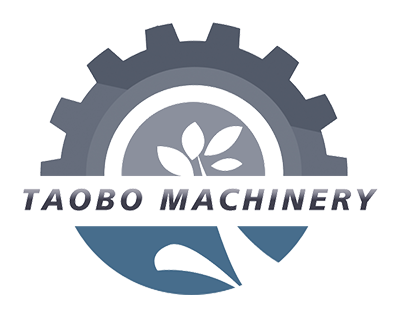The grading screen is the core equipment in the peanut bean cleaning process. Its core function is to grade and screen the peanut beans according to their particle size through multiple layers of screens with different apertures, while separating out mixed impurities (such as soil, broken shells, pebbles, shriveled beans, etc.), providing uniform and clean raw materials for subsequent shelling, sorting, processing and other links.
1. Preliminary Preparation: Ensure Equipment Compatibility with Raw Materials
Before starting the grading screen, key parameters must be determined based on the peanut variety (e.g., large peanuts, small peanuts), the initial raw material condition (shelled/unshelled, impurity content), and to avoid inadequate screening accuracy or equipment failure:
Screen Selection and Installation
Based on the target grading criteria (e.g., the particle size ranges for “large,” “medium,” and “small” in commercial grading), select 3-4 layers of screens with varying apertures, decreasing in aperture from top to bottom.
Check that the screen edges fit snugly against the screen frame to prevent “leakage” (ungraded peanuts entering the lower layers through gaps). Maintain the screen tension (too loose will cause the screen to vibrate ineffectively, while too tight can lead to breakage).
Equipment Commissioning and Inspection
Start the grading screen’s vibration motor and adjust the vibration frequency (usually 1400-1800 rpm) and amplitude (3-5 mm). Too weak vibration will cause peanuts to accumulate on the screen surface, preventing them from effectively filtering through. Too strong vibration will cause the peanuts to bounce excessively, reducing grading accuracy. Check the feed inlet, discharge inlet, and impurity discharge outlet for unobstructed access. Remove any remaining foreign matter (such as peanut fragments and lint from previous processing) to prevent pipe blockage.
Raw Material Pretreatment (Optional)
If the peanuts contain a large amount of lumps of dirt, long straw, or large impurities (such as branches), they must be removed manually or with a pre-cleaner (such as a drum screen or air separator) to prevent large impurities from clogging the feed inlet of the grading screen or damaging the screen mesh.
II. Feeding and Pre-cleaning: Stable Feed and Initial Impurity Removal
The key to this stage is to ensure that the peanuts enter the grading screen evenly. Vibration and air separation are used to initially separate light impurities, reducing the burden on subsequent grading.
Uniform Feeding
Peanuts enter the grading screen’s “feed buffer” (such as an inclined guide plate or distributor) via a conveyor belt or hopper. This prevents concentrated impact on the screen mesh (causing localized accumulation) and ensures that the peanuts are distributed evenly (usually 5-8 cm) across the top screen mesh surface. Control the feed rate (depending on the equipment’s throughput, e.g., 1-3 tons/hour). If the feed is too fast, the screen won’t have enough time to filter, resulting in “mixed grades.” Feeding too slowly reduces efficiency.
Wind separation and pre-impurity removal (built-in on some grading screens)
Some grading screens are equipped with a small fan below the feed inlet, which blows air onto the surface of the peanuts. Light impurities (such as broken shells, peanut fluff, and dust) are carried away by the airflow and fall into a “light impurity collection bag” on the side. The heavier peanuts continue to fall onto the upper screen for grading.
III. Grading Screening: The Core Step: Separation by Particle Size
Grading screens use screen vibration (usually reciprocating or circular) to cause the peanuts to continuously move and tumble across the screen surface, achieving “permeable grading.” Different levels of screen correspond to different separation targets.
IV. Impurity and Finished Product Collection: Classification and Processing to Ensure Purity
After grading and screening, materials from different outlets must be collected and processed separately to avoid cross-contamination:
Impurity Processing
Extra-coarse impurities (large stones, agglomerated mud): Discard directly as waste. If metal impurities (such as nails) are present, they must first be removed by a magnetic separation device (included in some grading screens) to prevent subsequent environmental contamination or damage to other equipment.
Light impurities (crushed shells, dust): Collected and transported to a waste site or used as biomass fuel (crushed shells can be burned for heating).
Fine soil impurities: Collected and used as agricultural fertilizer (after confirming the absence of pesticide residues) or handled according to industrial waste regulations. Finished Product Collection
Large and medium peanuts are stored in separate temporary storage bins. A breathable, moisture-proof mat should be placed on the bottom of the bin to prevent moisture and mold. Sampling is also conducted to check grading accuracy (e.g., randomly select 100 large peanuts and measure whether the particle size is ≥9mm, with an error of ≤5%). If accuracy is not up to standard, the machine will be shut down and the screen aperture or vibration frequency adjusted.
Small peanuts are collected and then air-sorted to ensure no fine soil remains. The peanuts are then stored in dedicated bins for subsequent processing or as feed.
Through the above process, the grading screen can achieve the integrated processing of “impurity separation + particle size classification” of peanut beans, which not only improves the cleanliness of peanut beans, but also can match different processing requirements according to particle size, thereby improving the efficiency of subsequent production and product quality.
Post time: Oct-09-2025







